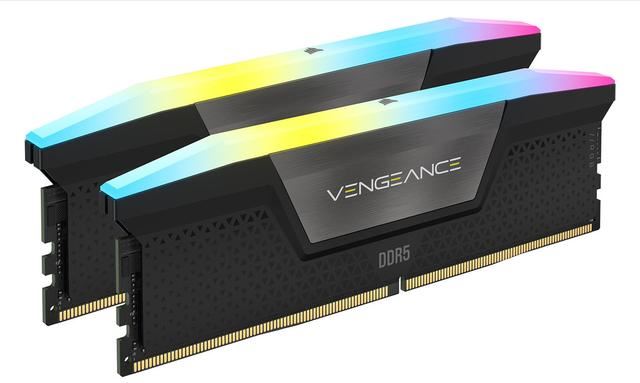Home >System Tutorial >Windows Series >MHz is history! Microsoft Windows 11 memory speed unit switches to MT/s
MHz is history! Microsoft Windows 11 memory speed unit switches to MT/s
- PHPzOriginal
- 2024-06-25 17:10:541269browse
Digital enthusiasts’ doubts: Why are there two sets of memory labeling units? Recently, many digital enthusiasts have noticed that there are two different forms of marking units for memory parameters: "MHz" and "MT/s". Such differences make people wonder: What is the difference between the two? In order to solve this mystery, PHP Editor Banana invites you to continue reading this article and delve into the meaning of the two units.

"MHz" and "MT/s" are both indicators of memory transfer performance, but they still have significant differences.
- MHz represents how many million cycles a memory module can perform per second, each cycle is an operation performed on the memory module, such as storing and retrieving data.
- But due to the rapid development of current technology, new technology allows DDR memory to increase the data transfer rate without increasing the clock speed, and the old memory measurement method has become inaccurate.
- MT/s, as a new performance indicator, more accurately represents the amount of data that a memory module can transmit per second. This change is in line with industry trends. Many companies and operating systems have begun to adopt MT/s as a performance measurement standard. .
Strictly speaking, "MHz" is a frequency unit used to describe the number of cycles per second of a circuit (such as a memory clock) oscillating, reflecting and expressing the frequency of the clock signal, that is, how many periodic electronic pulses there are per second. .

In early or non-DDR type memory, it is correct and rigorous to use "MHz" to measure and label the actual operating frequency of the memory, because this type of memory only transmits data once per clock cycle. MHz directly corresponds to and is equal to its actual operating frequency.
However, entering the DDR (Double Data Rate) era, the situation has changed significantly.
For DDR memory, due to the use of double-edge trigger technology, data can be transmitted on both the rising and falling edges of a clock cycle, so its actual data transfer rate is twice the clock frequency.

"MT/s" (millions of transfers per second) is a unit of data transfer rate that focuses on the actual data transfer rate. Simply put, 1MHz is equal to 2MT/s. For example, if the operating frequency of a DDR memory is 100MHz, its actual data transfer rate is 200MT/s.
Obviously, using the traditional "MHz" as the unit can no longer accurately reflect the actual data throughput capacity of DDR memory. Therefore, in recent years, many manufacturers and technology media have begun to gradually abandon the "MHz" as the unit and replace it with Use "MT/s" as the unit.
However, since "MHz" has been used for a long time, this practice and habit is difficult to change in a short time. Some manufacturers and technology media even use the two units interchangeably, which is quite "confusing". However, now, this chaotic situation is about to end, because a "heavy" technology giant has taken action.

This giant is Microsoft. In the latest version of Windows 11 Beta build 22635.3570 for developers, Microsoft has deprecated "MHz" in the task manager's module about memory operation indicators and replaced it with " MT/s", see image above.
In view of Microsoft's huge influence in the technology industry, it is expected that "MHz" will soon end its life and go into history. In the future, various manufacturers and technology media will switch to "MT/s" as the unit. Of course, "MHz" will not be completely eliminated, and will continue to be used in some specific fields.
At present, this is only a change made by Microsoft in the Beta channel, but it is basically certain and undoubted that this change will be launched and popularized in the final official version. Therefore, the majority of digital enthusiasts should understand and adapt to this as soon as possible, and experienced drivers must also keep up with the times.
Currently Microsoft only invites some Beta channel users to participate in testing, but users can enable this hidden feature through the ViveTool tool.
The steps are as follows:
- 1. Install Windows 11 Build 22635.3420 preview update.
- 2. Download the Vivetool tool from the GitHub page, and then extract it to any folder, but you need to remember the folder path.
- 3. Open the start menu and enter "cmd", then select "Open the command prompt with administrator rights".
- 4. Use the cd command to jump to the ViveTool folder
- 5. Then enter vivetool /enable /id:38476224,48380607 and press the Enter key
- 6. Restart the device.

The above is the detailed content of MHz is history! Microsoft Windows 11 memory speed unit switches to MT/s. For more information, please follow other related articles on the PHP Chinese website!
Related articles
See more- Is it necessary to split the drive if win11 only has one c drive?
- What is the difference between win11 home version and professional version
- How to check if Win11 is the official version
- How to skip online activation in win11
- How to turn off the mouse and keyboard lights after turning off the Gigabyte motherboard GA78LMTS2? (The mouse light cannot be turned off after the Gigabyte a88 motherboard is shut down)

